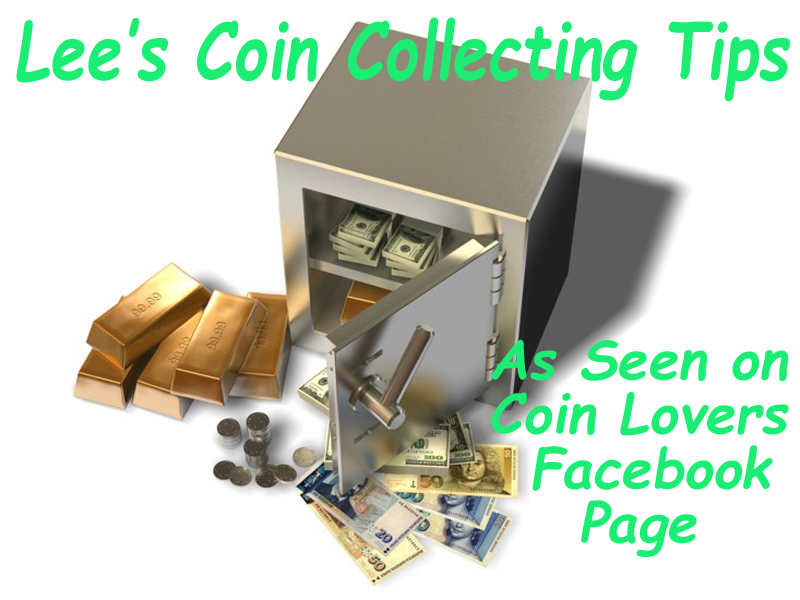

| search engine by freefind |
We would love to hear from you. Suggestions are also welcome.
To contact me, just click-on email below.
When you go after complete sets of coins you have to consider all of them, even mint and proof set coins. With the U.S. Cents, there is even another difference.
For this tip, I'll just stick to cents. Here's the scoop: After 1981 the composition of cents changed from 95% Copper to Copper-Plated with Tin or Zinc.
The 1982 cents is the exception. There were two varieties: P-D-S in 95% Copper, as well as P-D in Copper-Plated. The only way to tell the difference is by weighing them. 95% Copper cents weigh 3.11 grams, while 5% Copper-Plated cents weigh 2.5 grams. As a result, I weigh all of the 1982 cents that I come across.
There is another difference involving cents - those cents in both mint and proof sets are 95% Copper and 5% Zinc. So each year except 1982 and 2009 have nine varieties, with 11 for 1982 and 20 for 2009.
Be sure to check a current edition of "The Red Book" to be sure that you have every coin in the set(s) you are collecting.
So don't forget to leave room for all the cents in your album. And, keep enjoying our wonderful hobby!
© 2016
Another aspect of coin collecting is Tokens. These coin look-alikes come in many different types such as the following.
- Civil WarMain difference between coins and tokens is that tokens are not legal tender. Instead, they may offer a free something or monetary value at a certain merchant.
I dabbled in Token Collecting for a while. As a matter of fact, I still have a few favorites in my collection.
A late acquaintance of mine specialized in Tokens. His greeting was, "Got any tokens?" Upon his death, the thousands of pounds of well-labeled and organized Tokens were purchased by a well-known national coin dealer.
There have been guides and online references created for both Civil War and Hard Time Tokens. Peak your interest? Why not see if Token Collecting is for you?
© 2016
Joe Ciambruschini wrote: "Lee could you do a little something on Lincoln Memorial cents some time? Especially involving the years with large and small date varieties?" I'll be happy to.
Small and large dates occurred in the following years for Lincoln Cents.
- 1960 P & D1960 P & D
The easiest way to identify large and small dates on coins is to place both sizes side by side. However, there are three (3) identifiers that will help in your search.Only the 1960 P is considered rare.
1970 S
IMHO the 1970 S is the most confusing. "Why" you may ask. Simply stated it's the hardest to truly and accurately identify. Again, there are three (3) identifiers for this cent. It's commonly accepted that the first identifier is the easiest and may be the most accurate.1974 P, D, & S
These cents seem to be the least popular among collectors. The small and large date varieties are fairly common, with the large date being the most common. Major factor was that the Master Die was changed, which resulted in the small date. These cents are also referred to as Type 1 Die (large date) ad Type 2 Die (small date). There are two (2) identifiers for these coins.1982 P & D, also S
This was a transitional year for cents that went from 95% to 5% copper content. There are seven (7) varieties in Business Strikes.An "S" Large Date Proof also exists.
Weight - 3.11 troy grams for 95% Copper & 2.5 troy grams for 5% Copper Plated
There are two (2) identifiers in addition to weight.There you have it. Go try your hand on identifying these large and small date Lincoln Cents.
http://lincolncentresource.com/smalldates/smalldates.html
© 2016
World War II caused the United States and its citizens to ration certain materials with the purpose of keeping around important resources for winning the war. The United States Treasury and the U.S. Mint followed suit.
While most people are aware of the steel Lincoln pennies which were produced in 1943, fewer seem to know that the Jefferson silver nickels also spent a short period of time being produced under a special composition issue.
With nickel an important military material, the United States Congress required the U.S. Mint to begin striking nickels from a composition of copper (56%), silver (35%), and manganese (9%).
With the U.S. Mint having already begun striking 1942 nickels in the usual 75% copper and 25% nickel composition, use of the copper/ silver/ manganese alloy started late in 1942.
This special composition would last the duration of World War II thereafter, right on through 1945.
Jefferson Wartime Silver Nickels
So-called "wartime nickels" (as they are typically called by collectors and coin dealers alike) are special in a number of ways.Ironically, of course, there really is no nickel in these nickels. Yet, most people still refer to the 1942-1945 silver 5-cent pieces as nickels anyway.
Numismatically, though, one of the most important points to remark on about these silver nickels is the fact that wartime nickels represent an important "first" in United States coinage history.
Wartime nickels are the first U.S. coins to bear a "P" mintmark. "P" refers to the Philadelphia mint. Up until 1942, in fact, Philadelphia's coins never bore a mintmark. Philadelphia has always been the "main" U.S. Mint (or the headquarters U.S. Mint, to use modern corporate lingo). After 1945, U.S. coins would not again bear a "P" mintmark until 1979.
Another important issue to note about silver nickels and their mintmarks is the physical size of the mintmark. The wartime nickel mintmarks are huge - virtually unable to be missed by the naked eye. While some people have relative difficulty finding mintmarks on U.S. coinage, the same cannot be said of wartime nickels and their mintmarks. In fact, finding these large mintmarks over the dome of Monticello on the reverse of the coin is often the first way people can tell wartime nickels apart from "regular" nickels.
As the value of silver has risen over the past several decades, so has the demand for, interest in, and value of wartime nickels. With the rise in silver prices during the mid 1960s, the heavy spike in silver bullion values during 1979-1980, and recent declines and inclines in the price of silver, collectors and investors alike have been paying more attention to this run of 11 different silver nickels which were produced during the height of World War II.
The 11 dates and mintmarks for these silver nickels are:Wartime Nickels are still easy to find, fairly inexpensive, and another possible starting point from which to launch into investing in silver. I'm just saying…
© 2016
Here's the answer to the second part of the question posed by Joe Ciambruschini.
The Lincoln Cents made their debut in 1909, the 100th anniversary of the birth of President Abraham Lincoln.
According to the U.S. Mint, "The only person invited to participate in the formulation of the new design was Victor David Brenner. President Theodore Roosevelt was so impressed with the talents of this outstanding sculptor that Brenner was singled out by the President for the commission. The likeness of President Lincoln on the obverse of the coin is an adaptation of a plaque Brenner executed several years earlier which had come to the attention of President Roosevelt."
It marked the first time that "In God We Trust" appeared on a one-cent coin. It's interesting to note that the Act authorizing the use of this motto occurred on March 3, 1865 while President Lincoln was still in office.
The original model included Brenner's name appearing on the reverse, but was substituted by the initials V.D.B. After its release folks complained that those initials distracted from the design. So, the initials were removed after only 484,000 were minted. No proof coins were produced. Of the four (4) varieties 1909, 1909 V.D.B., 1909-S, & 1909-S V.D.B., the rarest is the 1909-S V.D.B.
Brenner's initials were restored in 1918 and appear in very small type just under Lincoln's shoulder.
Through 1958 the Lincoln Cents had wheat ears on the reverse and are often referred to as Wheaties. The content was 95% copper.
During WWII, the composition changed to zinc-plated steel so that copper could be diverted to the war effort in 1943. As explained by the U.S. Mint, "…copper released for the war effort was enough to meet the combined needs of 2 cruisers, 2 destroyers, 1,243 flying fortresses, 120 field guns and 120 howitzers, or enough for 1.25 million shells for our big field guns."
In 1959 the reverse design was changed to the Lincoln Monument as part of the celebration of the 150th anniversary of Lincoln's birth. It remained that way until through 2008.
1982 saw two varieties of composition: 95% copper and copper-plated cents. The only way to tell them apart is via weight: 95% = 3.11 troy grams and copper-plated = 2.5 troy grams.
There were also four (4) years in which small and large date varieties occurred.In celebration of President Abraham Lincoln's 200th anniversary of his birth, there were four (4) different reverse designs: Birthplace in Kentucky (1809-1816), Formative Years in Indiana (1816-1830), Professional Life in Illinois (1830-1861), and Presidency in Washington DC (1861-1865).
The Union Shield design appeared as the seventh (7th) different reverse design in 2010. This design continues through today.
The Lincoln Cent is an excellent and challenging numismatic specialty. Why not give it a try?
https://www.treasury.gov/about/education/Pages/lincoln-cent.aspx
© 2016
The National Organization for the Repeal of the Federal Reserve Act and the Internal Revenue Code (NORFED) was founded by Bernard Von NotHaus on September 11, 1974 in Evansville, Ind. His Mission Statement was "To provide an alternative currency to that which is issued by the U.S. federal government: a currency that is backed by gold and silver, and therefore inflation-proof. NORFED has manufactured these coins in various denominations, including $1, $5, $10, and $20 in silver, and $500 in gold." In short, NORFED was attempting to produce an alternate currency.
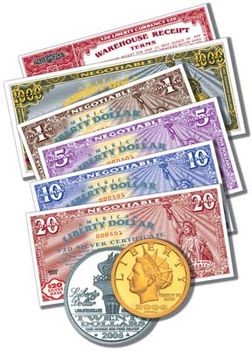
The NORFED mint produced Silver Liberty Dollars in $10 and $20 denominations; $50, $500 and $1000 Gold Liberty Dollars, $1000 Gold Rand Paul Dollars; $2000 Platinum Rand Paul Dollars; $1 Copper Liberty and Rand Paul Dollars. The latter manufactured in China; $1, $5, $10, $20 and $50 Silver Certificates; and $500 and $1000 Gold Certificates. Additionally, $20 Silver Liberty Dollars had a series of these coins hallmarked with one of 25 states on the reverse. Various other hallmarks appeared on some $10 and $20 Liberty Dollars.
The final showdown with the Federal Government began when the U.S. Mint's Presidential Dollar Series debuted in 2007. The U.S. Mint deemed the Liberty Dollars were "confusing" to Americans.
In the 2007 raid, federal officials seized documents and almost two tons of Ron Paul gold Liberty Dollars from Liberty Services' office in Evansville. Other amounts of gold and silver were also taken. Von NotHaus' conviction in 2011 was on charges of conspiracy to publish, possess and sell/utter counterfeit coins in violation of 18 U.S.C. § 371, mail fraud or aiding and abetting in violation of 18 U.S.C. §§ 1341 and 2, and counterfeiting, uttering counterfeit coins, or aiding and abetting of such in violation of 18 U.S.C. §§ 485, 486 and 2.
Although the 70 year-old NORFED Founder was facing up to a 20-year Federal prison sentence, it wasn't until late 2014 that he was sentenced to six-months of house arrest to run concurrently with three years of probation by U.S. District Judge Richard L. Voorhees in Statesville, North Carolina. In many folk's minds, a domestic terrorist had been born.
It's not illegal to own or sell NORFED coins and currency numismatically. Yet, a few years ago while attending an ANA Money World event; I found that the NORFED exhibit that I was looking forward to seeing had been pulled due to it possibly being confiscated by the government.
I have a few NORFED coins in my collection.
Von NotHaus left the public eye after his 2014 sentencing, and he is now favored with the type of "… is in the building" announcements as Elvis still is awarded with.
Interestingly, Bitcoin is a brilliant combination of the Liberty Dollar's soundness and Napster's distribution methods, with a few extra features thrown in to protect it against shutdowns. So the cat-and-mouse game with the Feds continues…
© 2016
Since Mercury Dimes are so popular and collectable, I thought I'd share some fun history facts. Their actual name for Winged Mercury Dimes.
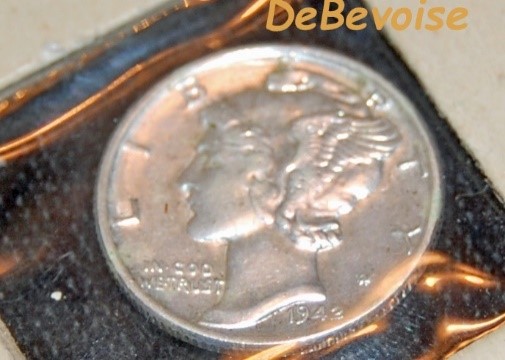
You see Liberty dimes, quarters and half-dollars were to be introduced in 1916. The United States was preparing to enter WWI and the nation's patriotic fervor was at an all-time high.
Besides the Winged Mercury Dime, the Standing Liberty quarters and half-dollars were all targeted for 1916. However, a series of problems delayed their final production and release until later in 1916, with some banks not getting any until early 1917.
The problems seemed to revolve around coin sculptors/designers who were not familiar with the coin minting process. Their designs were beautiful but not possible to mint. Plus there was that controversy over the exposure of one of Standing Liberty's breasts.
In the end, the Winged Liberty dimes looked more like the mythological Mercury to most people, so the name stuck.
© 2016
Looking for a challenge? Try collecting a Type Set.
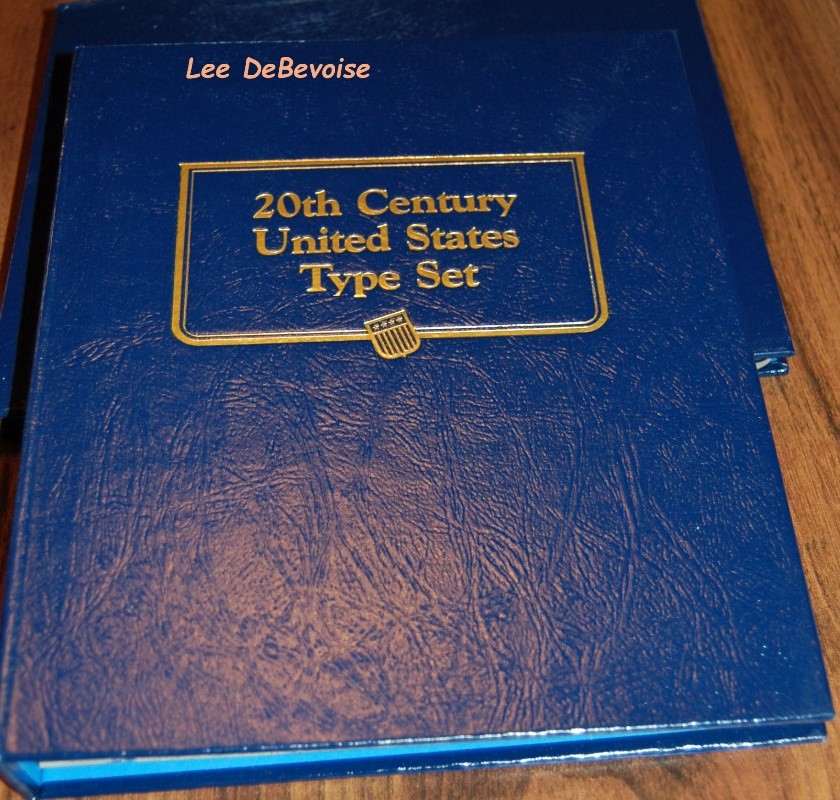

There are many, many kinds of Type Sets and albums for each. I'm currently working on a 20th Century United States Type Set. I started by seeing what coins I currently had and placing them in the album. Then I started buying coins as I could afford them. My final step will be to upgrade those I already had. My goal is to have all BU-PR (Brilliant Uncirculated-Proof) coins in this type set.
I'm also working on a specialized Lincoln Cent Errors and Varieties Type Set. My goal is to collect an example of each known type of error and variety known to have occurred in Lincoln Cents. I made my own album from a loose-leaf and pages to hold 2x2 flips and also slabbed specimens.
A third type of Type Set I'm working on is by Mint. Choose a year for each of the most common mints: P (Philadelphia), D (Denver), and S (San Francisco). I've also included CC (Carson City). Then find each coin produced by that mint in the year you've chosen. I keep this Type Set in a binder as described above.
Peak your interest? If so, start your own Type Set and let me know how it's progressing!
© 2016
Joe Ciambruschini I think Ikes are a very under-appreciated coin. Especially considering all the varieties. I'd like to see a piece done on them.
Be happy to do just that, Joe. When the last Peace Silver Dollars were produced in 1935 no more dollars were minted until the Dwight D. Eisenhower Dollars in 1971.
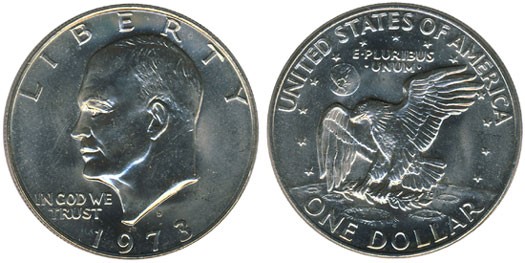
Better known as "Ikes", these dollars were minted 1971-1978, except for 1975, utilizing a copper-nickel clad composition, which consisted of an outer layer of 75% copper and 25% nickel, bonded to a core of pure copper. They were produced at both the Philadelphia and Denver Mints. 1973 was the lowest mintage with 1,769,258 clad dollars produced at both Philadelphia and Denver Mints.
The reverse of the Ikes was changed for the 1976 Bicentennial and featured the Liberty Bell and the moon. There were no Ike Dollars minted in 1975. Instead the 1776-1976 Bicentennial issue was used for both years.
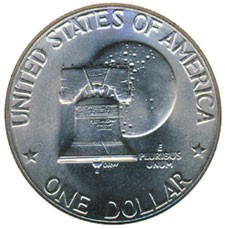
Uncirculated Silver Ikes, 40% silver and 60% copper, were minted in 1971-1974 and 1976 at the San Francisco Mint. Proof 40% Silver Ikes were also minted during these years. Additionally, San Francisco Proof Copper Clad Ikes were produced in 1973, 1974, 1976, 1977 and 1978.
In 1972 Ike Dollars featured three reverse types. The difference is revolves around the relief, aka clarity, of the earth.
- Type 1The 1976 Bicentennial Ike Dollars came in two types, with Type 1 harder to find in higher grade Philadelphia Mint dollars.
- Type 1 featured large bold block lettering on the reverseThere also were "Blue" and "Brown" 40% Silver Ikes throughout their run. Blue Ikes were the Uncirculated variety, came in blue envelopes with a blue mint token accompanying the dollar. The Brown Ikes were the Proof variety that came in brown boxes.
Dwight D. Eisenhower, aka Ike, dollars are an interesting type of U.S. Coin that should challenge collectors for years to come! To have a complete collection you need to obtain 34 different Ikes, which also includes the varieties.
© 2016